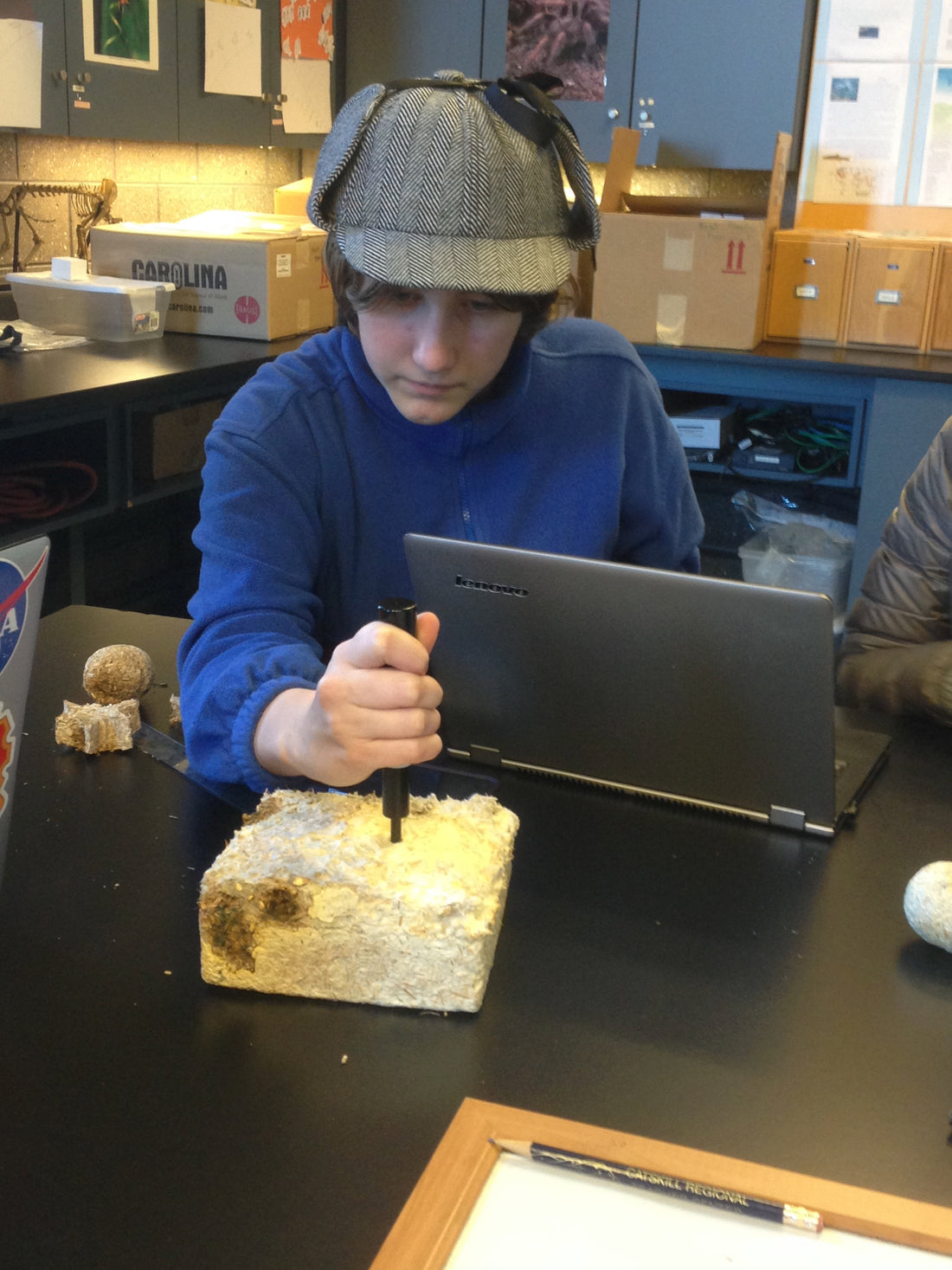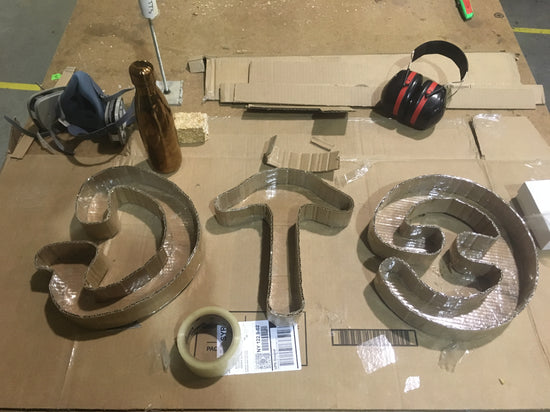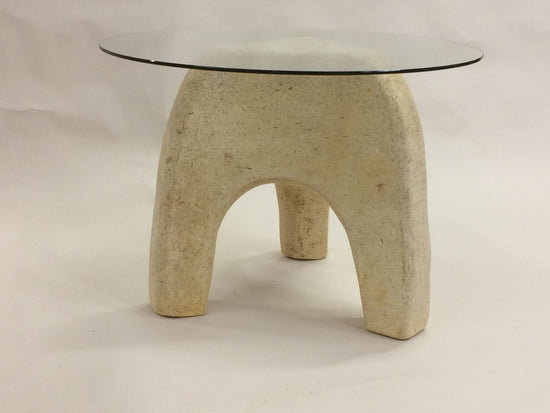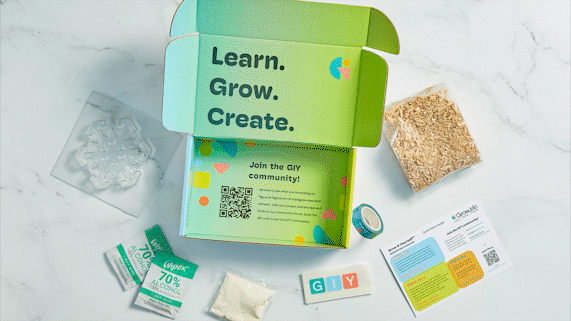I have been working with Ecovative for many years. As a high school biology teacher and dedicated environmentalist, I jumped at the chance to use their Grow it Yourself (GIY) material as soon as it was available. It was a special opportunity for me to do research in the classroom, to give my students an excellent example of environmental stewardship, and to support an innovative company in the Capital District.
Our students at Emma Willard School in Troy, NY love working with Ecovative’s GIY Kit. They find it easy to use, ideal for designing experiments, and wonderful for the environment. Our ninth grade STEAM (science, technology, engineering, arts, math) Research students, and pupils in our biology courses do great things with Ecovative’s revolutionary biomaterial.
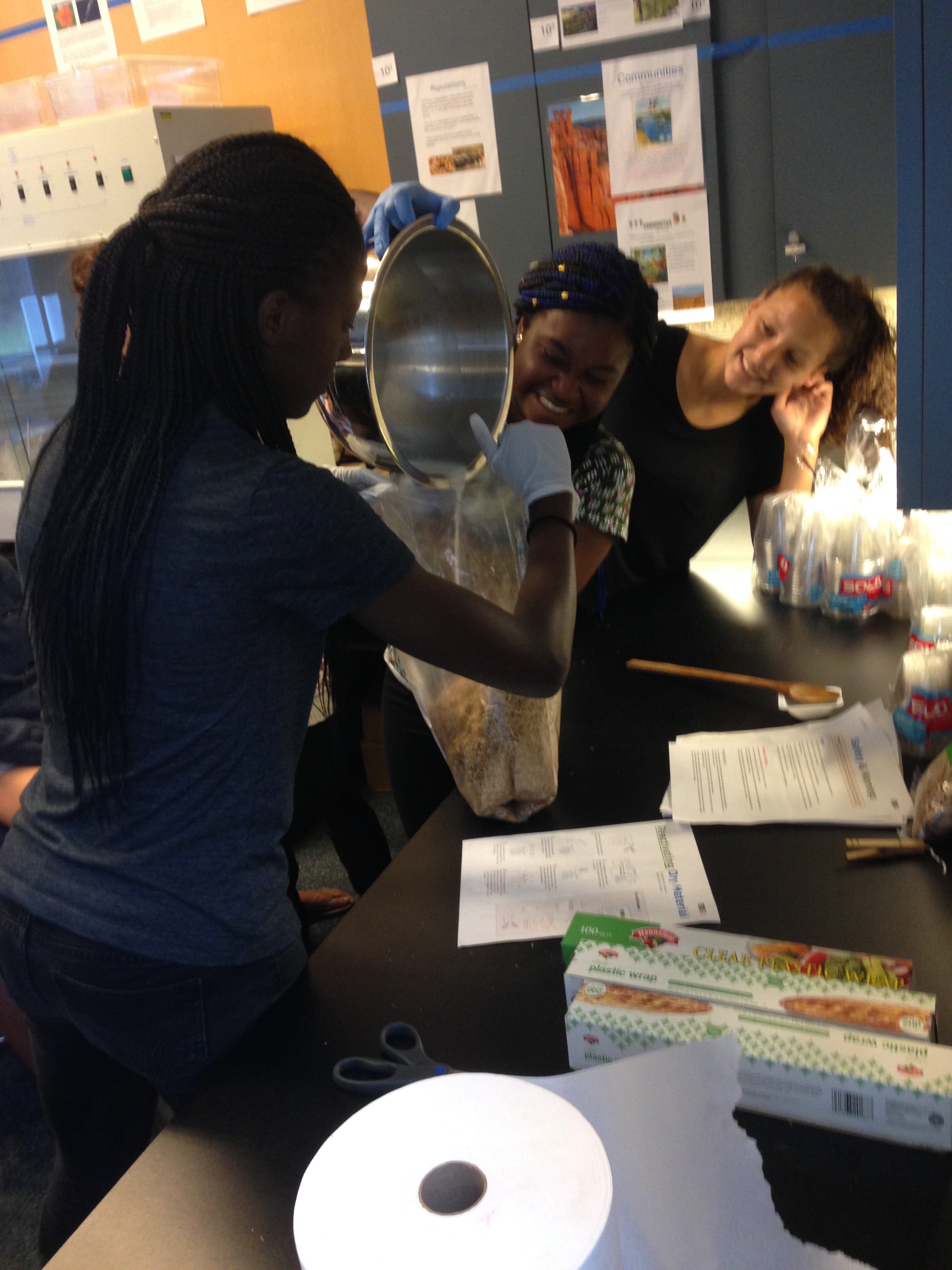
Emma Willard students re-animating the GIY material for use in a classroom experiment. Photo Courtesy: Jon Calos, Emma Willard School.
During the spring semester, our ninth grade STEAM Research students learn how to reactivate and grow Ecovative’s Mushrooom® Material in their own creative tools (three dimensional objects for packing the material). They make Ecovative Christmas cookies, iPhone cases, and Frisbees (putting the “A” in STEAM). During the second phase of the course, they may manipulate the GIY process in a scientific way during an independent project, like our biology students.
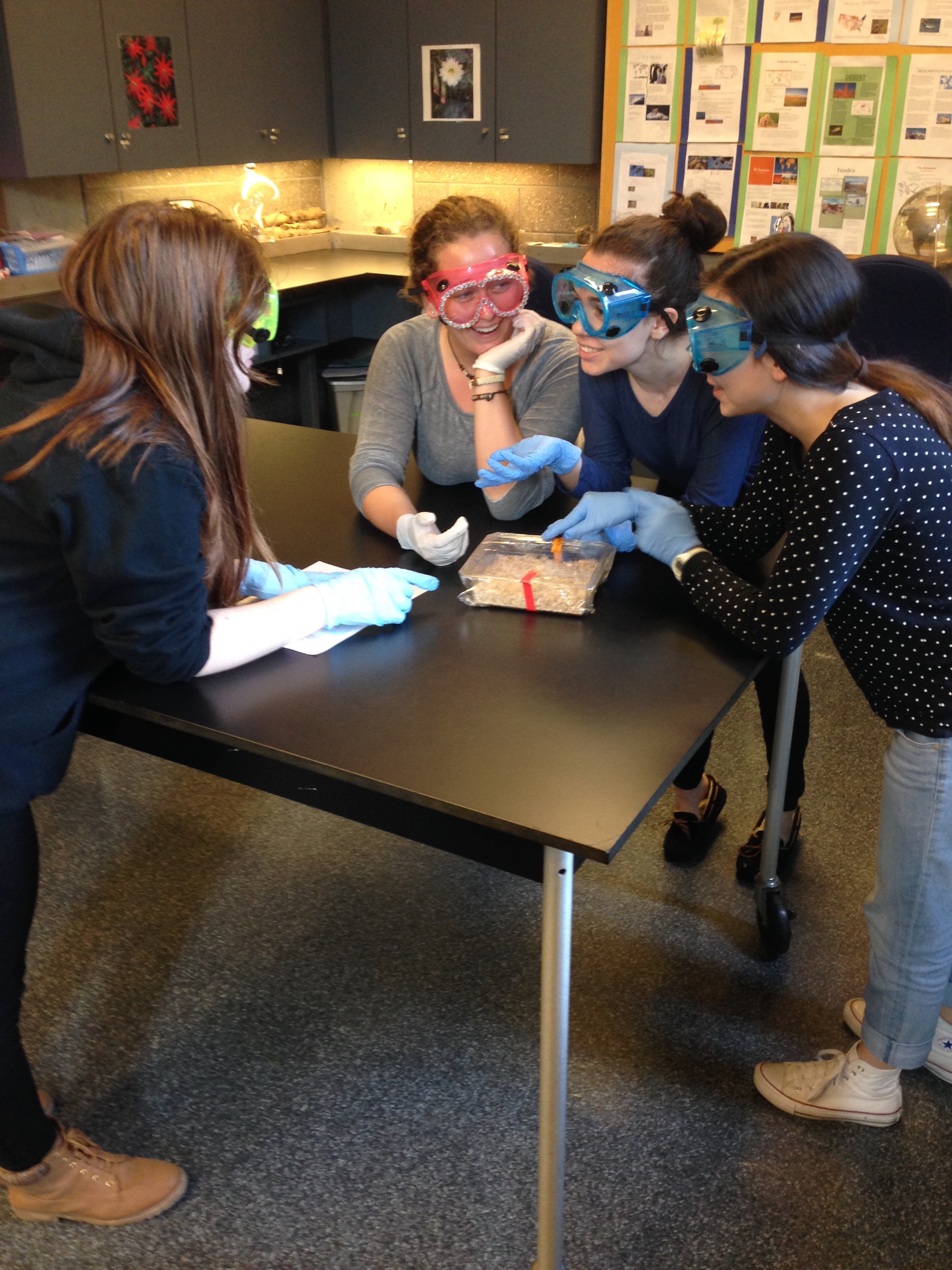
Emma Willard Students conversing over a growing block of GIY material for a classroom experiment. Photo courtesy: Jon Calos, Emma Willard School.
Students work with GIY in our biology courses in the Fall semester. They generally design authentic science experiments in each of the class units: ecology, genetics, evolution, and human anatomy and physiology. GIY is simply perfect for our ecology experiment. After they learn the GIY basics, research teams investigate one important environmental factor that is integral to the GIY process. Some examples are: how flour type influences the firmness of GIY; the relationship between incubation temperature and GIY growth; and testing natural dyes to color GIY as it grows. Ecovative’s GIY produces reliable results that are readily measured, which is just what our students are hoping for.

Emma Willard student testing the compaction of a block of GIY material for a classroom experiment. Photo courtesy: Jon Calos, Emma Willard School.
Our teachers value GIY for a variety of reasons. It is simple and affordable, it is easily and consistently manipulated, and it is an excellent example of an environmentally sustainable product. It can be applied to a range of projects, and it shows students a radically new way to produce industrial, every-day objects.
As a dedicated environmentalist, Ecovative’s GIY is a fantastic resource. Not only is it a superior system for my students, it comes from a company that is doing all the right things for our local and national economy. Ecovative is making a fascinating material in my own region, that is as green as can be, and completely realizes the Cradle to Cradle philosophy. I wish I had more options like this for the rest of my biology unit experiments!
- Jon Calos
Jon Calos is the science department chair at Emma Willard School in Troy, NY. Jon has been working with Mushroom® Materials for over 5 years and is one of the first early innovative adopters of GIY materials for use in the classroom.


